What is the best kitchen island shape? These designs will redefine how you use your kitchen forever
Harness the full potential of this coveted kitchen focal point by choosing a popular shape that will change how your kitchen functions

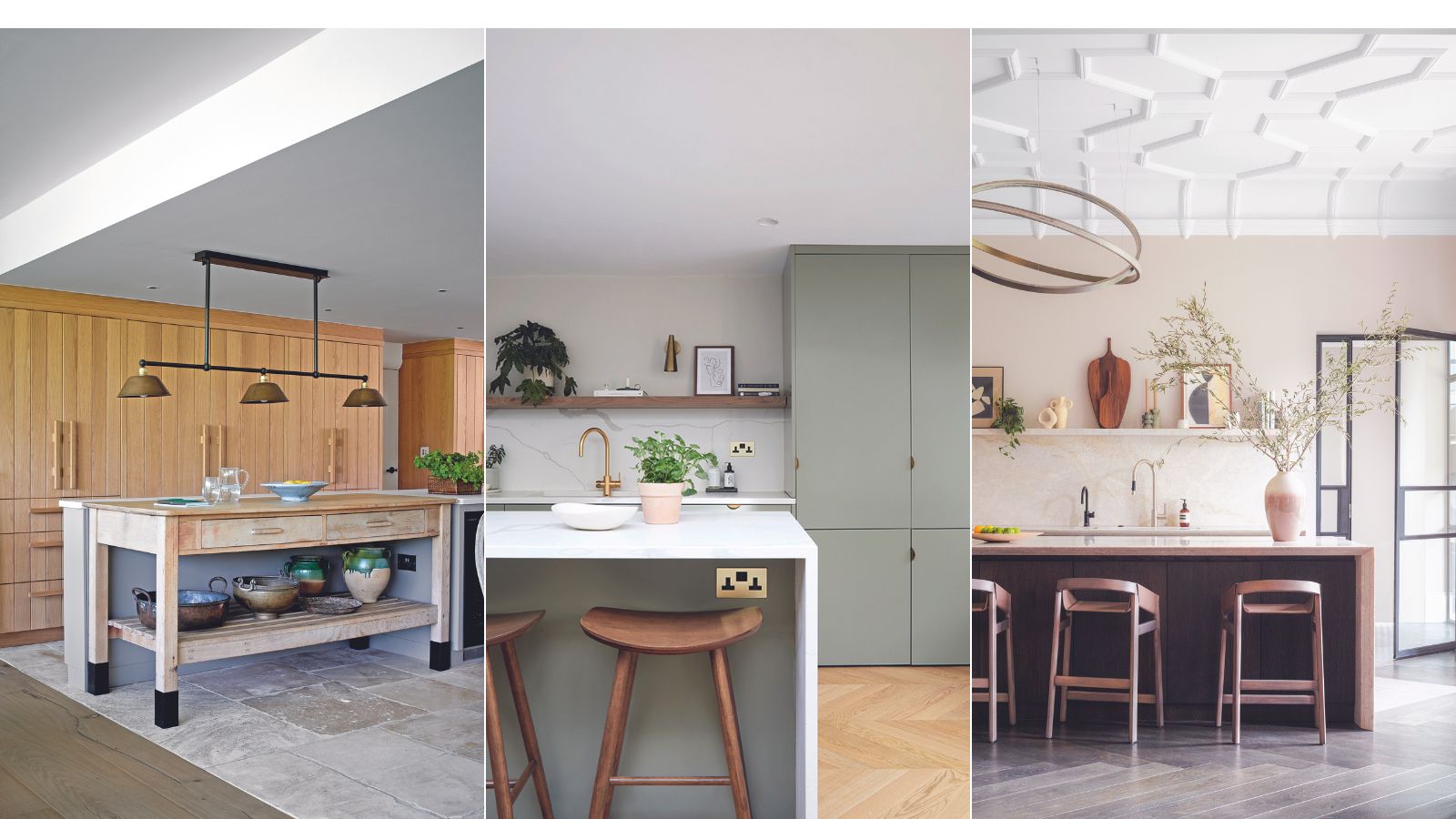
Choosing a kitchen island is arguably the most important part of the kitchen design journey: after all, it will dominate your new kitchen and will usually be where most of the cooking, entertaining, and washing up takes place.
An island is an eye-catching, versatile addition to any kitchen, but we can often find it difficult to know how to incorporate one into our kitchen layout and to choose from the different options available.
Unsurprisingly, the most popular shape for a kitchen island is a simple rectangle or square shape. These can help to synchronize your kitchen, as the island will run parallel to the other work surfaces. However, this option isn't for every kitchen. Below, we've asked some of the world's best kitchen and interior designers to share their expertise on choosing a kitchen island for every size kitchen, so read on before you finalize that all-important decision.
What is the best kitchen island shape?
The best kitchen island shape may seem like just a matter of opinion, but there are certainly a few important considerations to make before choosing an island or designing a kitchen.
It is important to get crucial things like the size and the positioning of the island right – no one wants to end up with an island that overwhelms the room or is awkward to get around. This is why some of the best kitchen designers are in agreement on how to choose an island for your kitchen. Firstly, think about what you need from your kitchen as well as the size and layout of your space. The right answer will most certainly be dependent on these factors.
To help you decide which is the best kitchen island shape for you, we've compiled a list of our favorite designs for different kitchens to show you just how wonderful and versatile an island can truly be.
1. If you have an open-plan kitchen, use fluid shapes to add movement
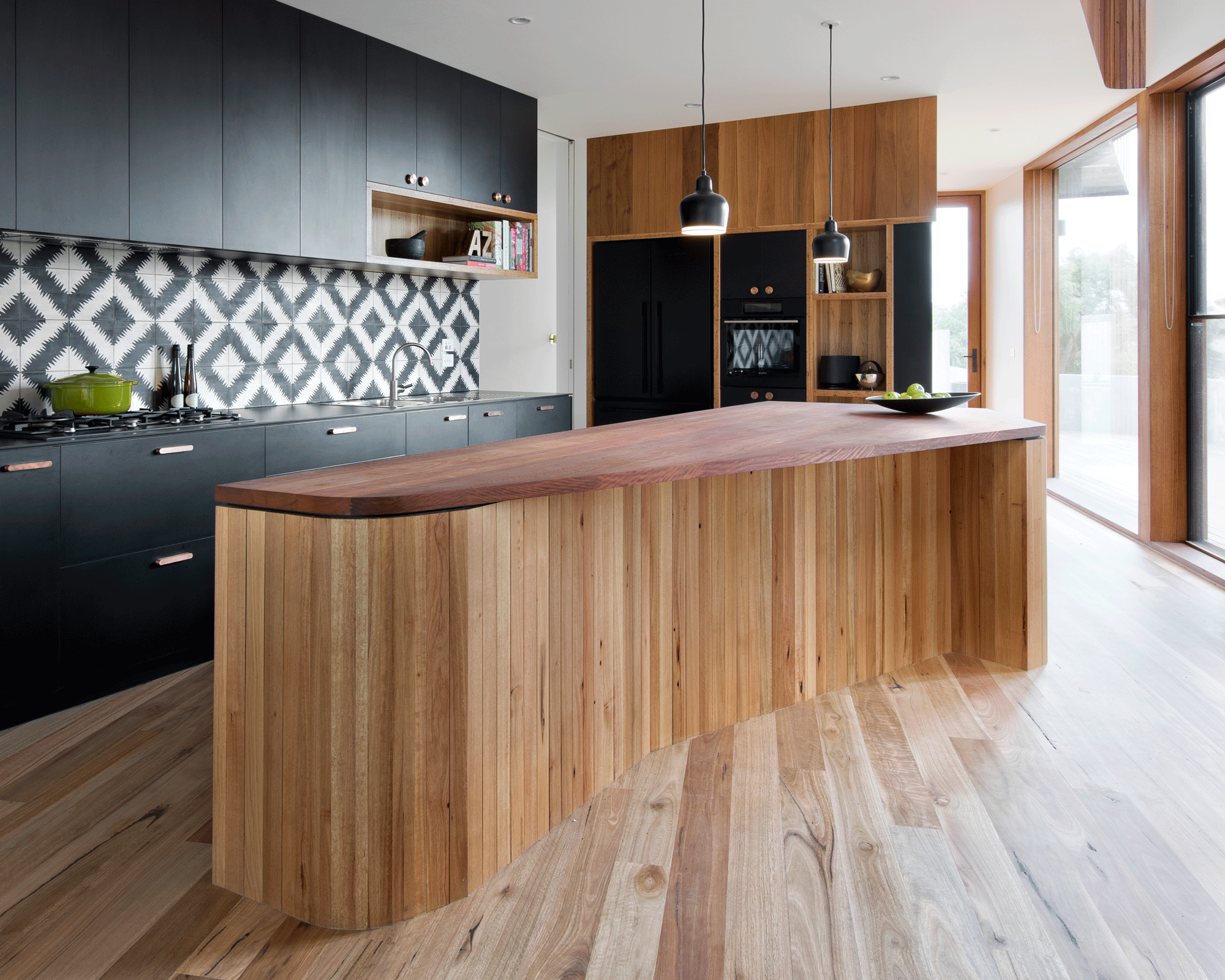
Shapely designs and fluid shapes are a big kitchen trend for 2023. With the emphasis today on the home as a family space, used for socializing and relaxing as well as preparing food, regimented rows of units and clinical design can look a little too stark.
Design expertise in your inbox – from inspiring decorating ideas and beautiful celebrity homes to practical gardening advice and shopping round-ups.
In this modern kitchen, curvaceous designs lend movement and dynamism to this elongated island. Sculpted to aid smooth passage through an open-plan home, the kitchen countertop overhangs at one end to provide breakfast bar dining.
The work of Australia-based Auhaus Architecture, this island is made from Australian hardwood, with a durable oiled finish. Formed from vertical planks, which are more cost-effective than bending wood, the timber structure appears to rise out from the wooden flooring below.
2. Supersize with a rectangle island in a large kitchen
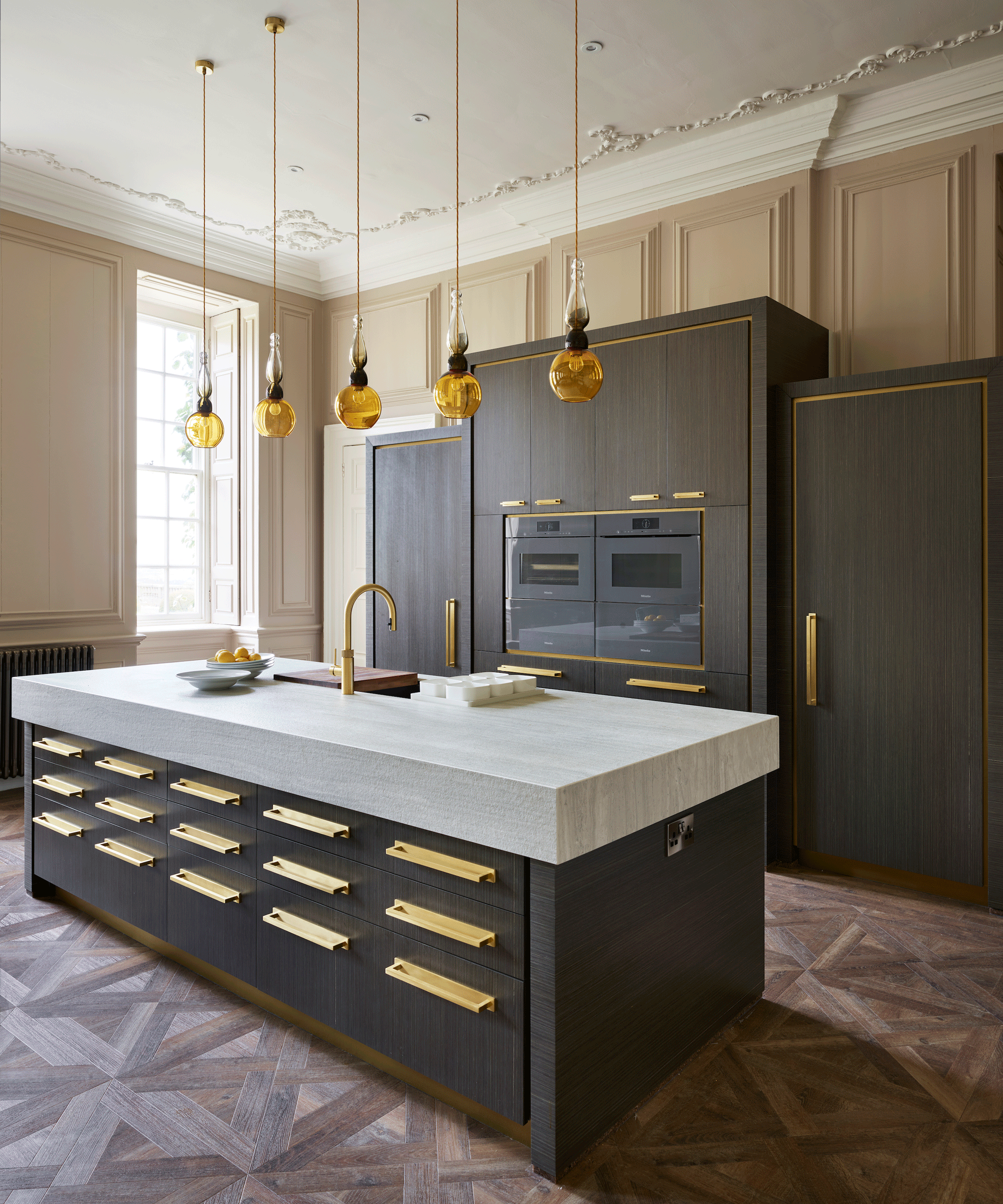
A generously sized kitchen calls for a rectangle island with generous proportions to ensure it doesn’t appear lost in the space. If your kitchen can handle it, we always say 'go big' when it comes to choosing your kitchen island. Why? You will never regret a large island.
'Bear in mind that the kitchen is more than just for food preparation – it is the hub of the home, a media room, a family room, a dining room, a breakfast room, and there are different requirements for all these things, and you'll find that most center around an island, so the bigger the better,' says designer Hubert Zandberg.
Here, Chiselwood used chunky countertops and outsized handles for an eye-catching island that packs a powerful punch. ‘The thickness of the countertop is what stands out. You get impressive depth without the pressure of excessive weight on the cabinetry beneath it,’ explains design director Martin Holliday.
3. Choose an unusual V-shaped island in an ultra-modern kitchen
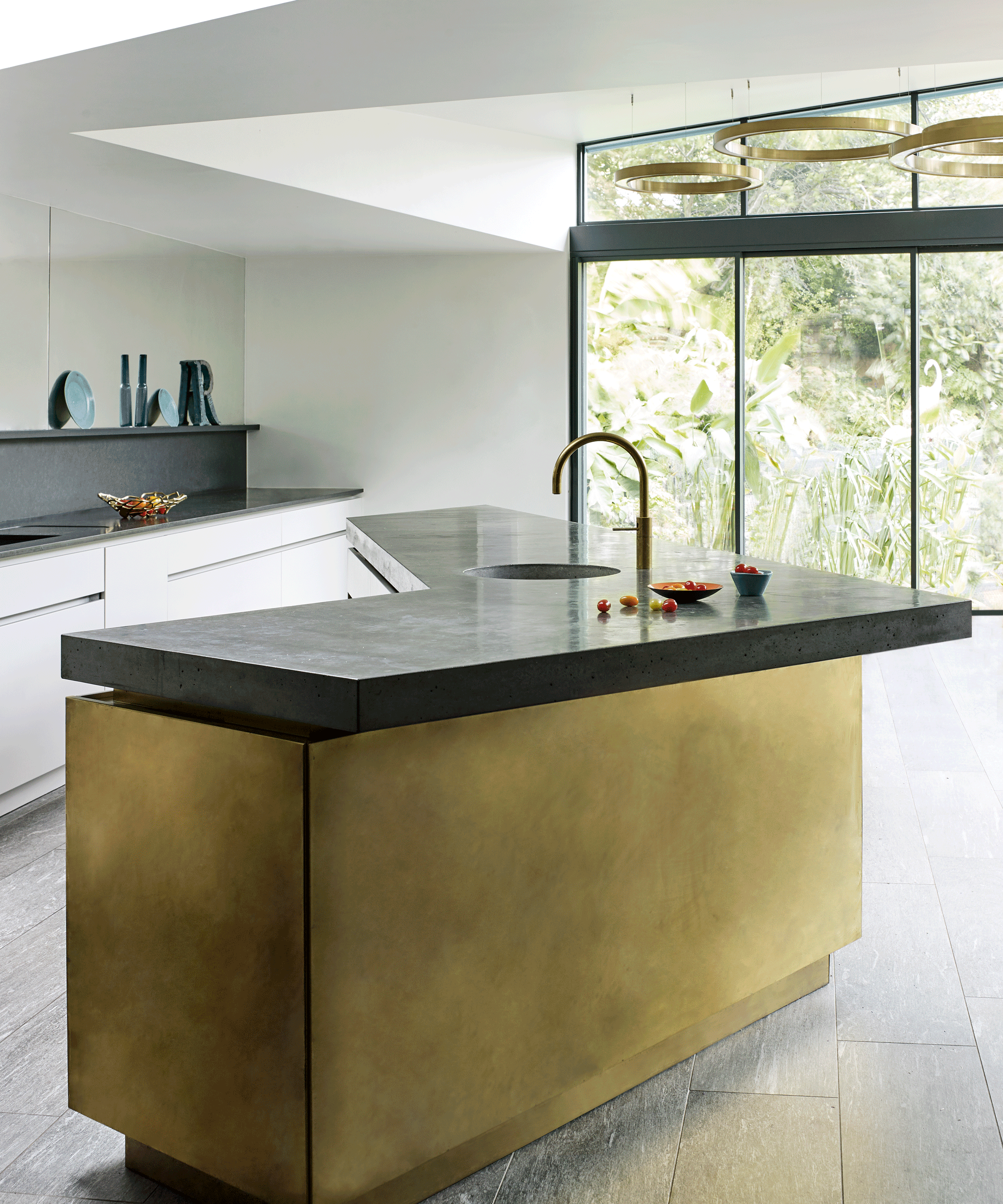
If want your kitchen design to be anything but the 'norm', then invest in an unconventional kitchen island shape that is guaranteed to be the talking point when guests come over.
This dynamic shape is totally unique and one-of-a-kind, but it still serves a practical purpose as a room divider. ‘It’s a brave move to step beyond classic rectangular designs but the pay-off can be huge in terms of visual impact,’ explains Jane Powell, designer, Roundhouse. 'Here, we designed the island to look like a beautiful piece of furniture. It reflects the owners’ adventurous personality, while also helping to zone the open-plan kitchen and create a clear division between cooking and relaxing.'
4. If you have a large family, try a T-shape island
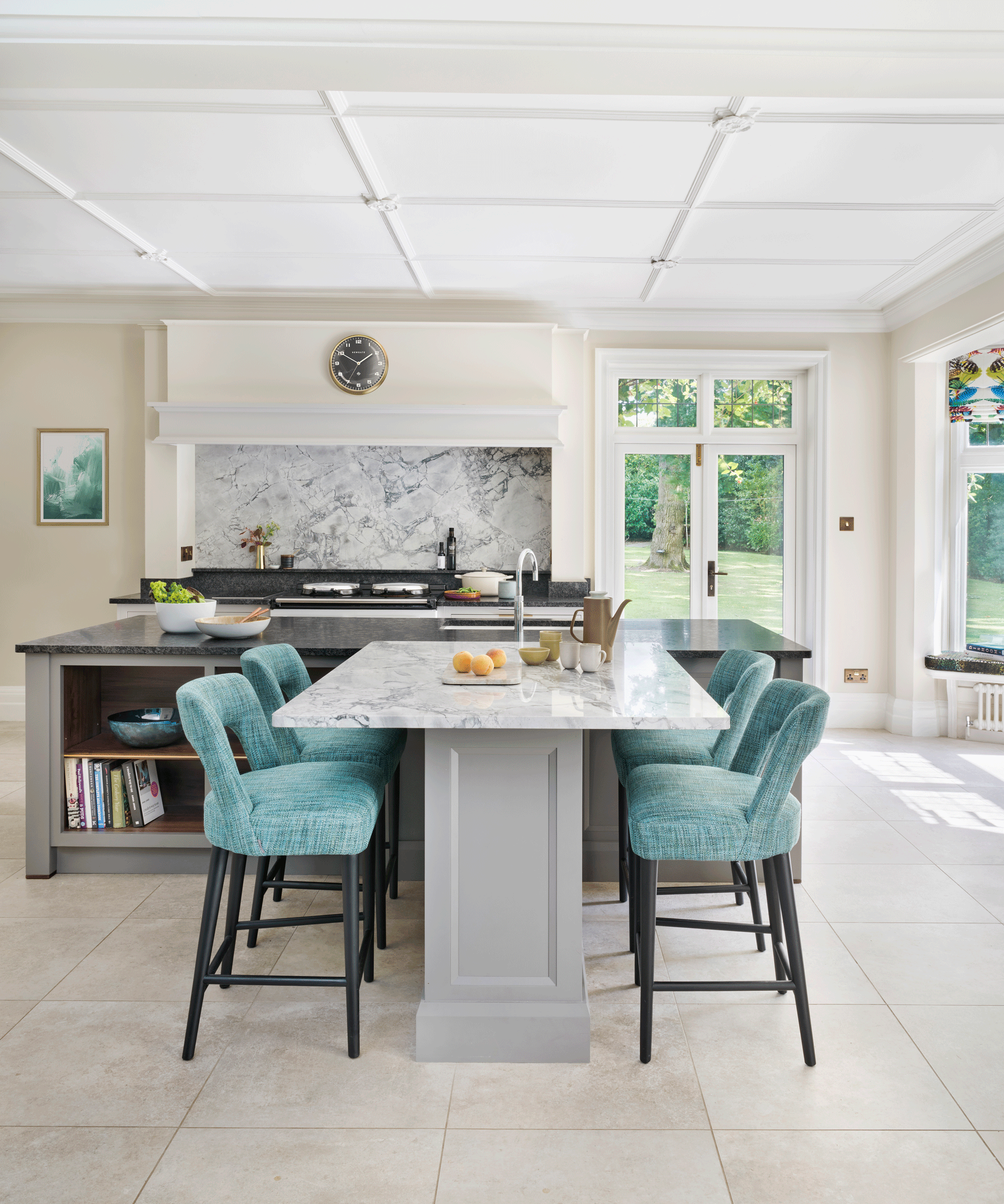
A T-shaped island can avoid one of the classic kitchen island mistakes of going too small in a large room and missing the opportunity to accommodate a host of activities at the heart of the room.
When curating a kitchen for the whole family, the big appeal is for the kitchen and cook to be part of the action when entertaining, which is why your choice of island is vital to the success of a family kitchen.
This design creates clearly defined work and dining zones, and different countertop materials make the elements distinct, too. If you require more space to move around, invest in bar stools that can be nearly tucked under instead.
5. Measure the space around an island in a small space

If you don't have a lot of space, you might be thinking your kitchen is too small for an island – but this may not be the case. When considering island size and shape, think about the space you’ll need beyond it.
‘Islands are an eye-catching feature in a kitchen but they can eat up a substantial amount of space,’ says interior designer Amanda Evans. ‘So when thinking about adding one into your kitchen, it is important to consider the available space and the circulation area around the island. Typically, 48in (1200mm) between the cabinetry and island will be needed for a scheme that invites an easy flow, especially in a small kitchen.’
In this diminutive design, the island area is maximized but leaves just the right amount of space for users to move comfortably around its sides.
6. Soften a minimal kitchen with round edges

If it wasn't obvious, we adore the curved islands seen in Milan, New York, and Miami, and we think this look will endure well beyond 2023.
A bold approach to materials can provide extraordinary results. Formed and cast on-site by Kote London, this curved island, made from concrete, is a stand-out feature in an otherwise understated kitchen.
‘We wanted it to feel like a piece of art in the space,’ explains Stephen Nash, founder, All & Nxthing Interiors. ‘Rounding off all the corners improves functionality and flow while helping to soften the look of what is actually a very practical island,’ he adds.
This shapely design is a great choice for one-wall kitchens and can also act as a room divider for open-plan homes.
What are the most popular kitchen island shapes?
The best kitchen island shapes are ones that are ergonomic, proportionate, and practical as well as beautiful, but that doesn't always equate to popularity. Here are the most popular kitchen island shapes for the modern kitchen.
- Rectangular kitchen islands (this is by far the most common island shape)
- Square kitchen islands
- Curved kitchen islands
- Round kitchen islands
- U-shaped kitchen islands
- L-shaped kitchen islands
- U-shaped kitchen islands

Jennifer is the Digital Editor at Homes & Gardens, bringing years of interiors experience across the US and UK. She has worked with leading publications, blending expertise in PR, marketing, social media, commercial strategy, and e-commerce. Jennifer has covered every corner of the home – curating projects from top interior designers, sourcing celebrity properties, reviewing appliances, and delivering timely news. Now, she channels her digital skills into shaping the world’s leading interiors website.